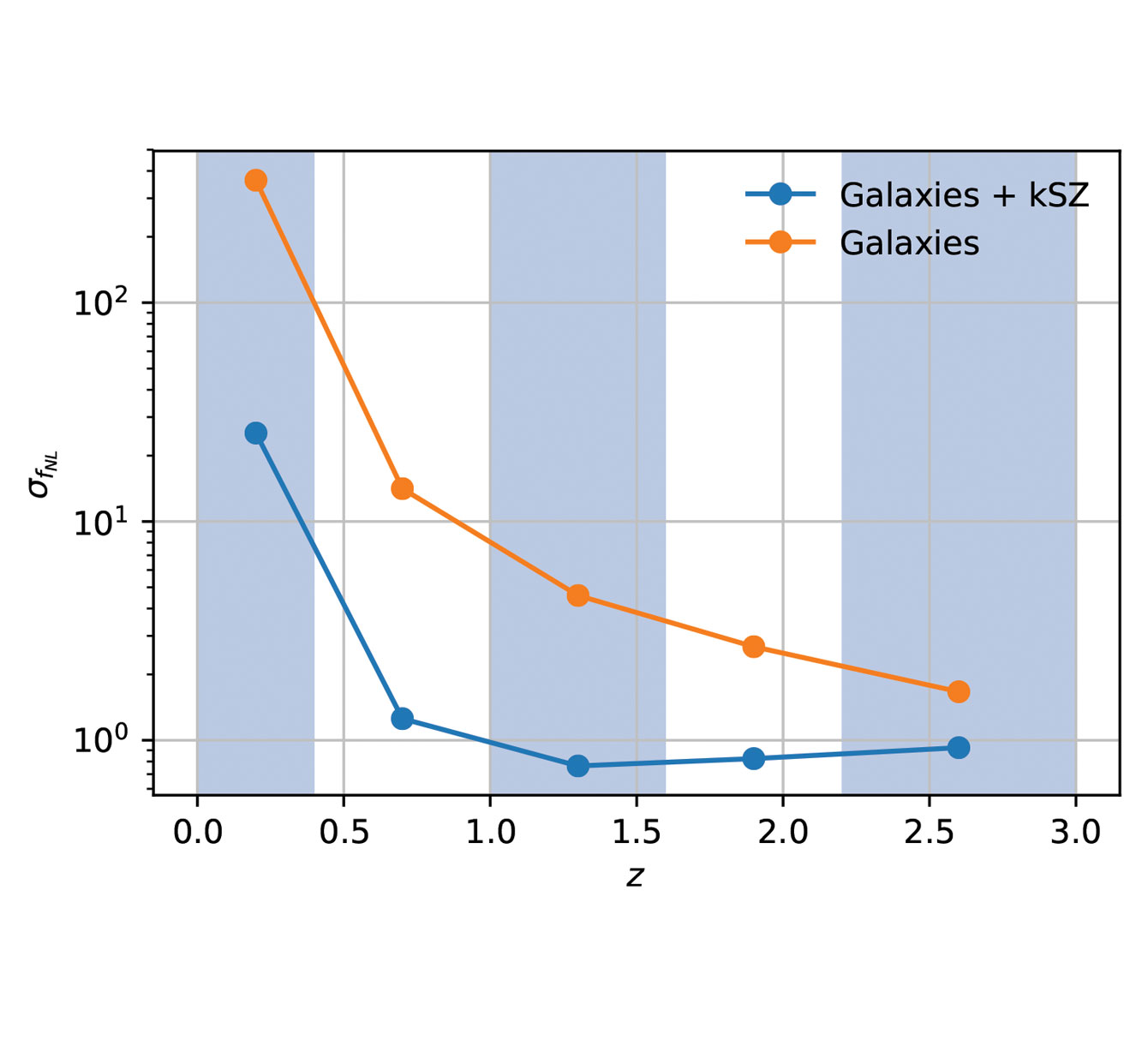Constraining local non-Gaussianities with kSZ tomography
A main goal of observational cosmology is to detect non-Gaussianity of the primordial matter distribution, which is a probe of the quantum physics of inflation (or alternative theories). The most prominent type is called local non-Gaussianity, parametrized by the fNL parameter. The most promising method to measure fNL to higher precision than with the primary CMB (a constraint that is nearly saturated) is through scale-dependent bias in the power spectrum of galaxy surveys. Scale-dependent bias can be measured more precisely if one can measure both the matter distribution and the galaxy distribution in the same volume, via a technique called sample variance cancellation. This is where the very low noise measurement of the matter distribution described in our paper comes in. By combining galaxy data and kSZ velocity data, we will be able to get significantly better constraints than from galaxies or CMB alone. In addition, this method is not sensitive to critical calibration issues in the auto power spectrum of galaxies. We showed that with next generation experiments (CMB S4 + LSST), one can improve non-Gaussianity constraints by a factor of three compared to LSST alone. For these experiments, one could exclude the theoretical “multi field inflation threshold” of fNL~1 by 2-3σ, gaining important information about the primordial universe. Our paper is a PRD editor’s suggestion.
